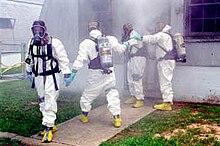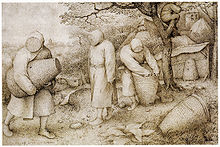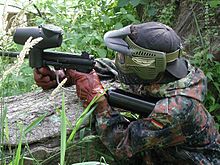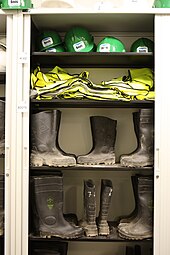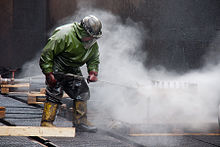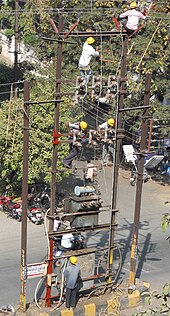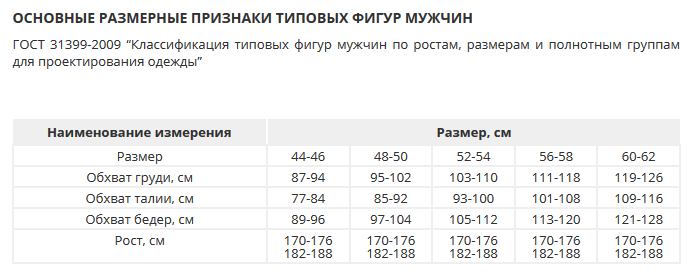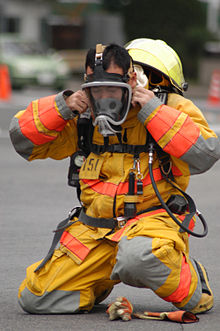Как правильно пишется словосочетание «средство индивидуальной защиты»
- Как правильно пишется слово «средство»
- Как правильно пишется слово «индивидуальный»
- Как правильно пишется слово «защита»
Делаем Карту слов лучше вместе
Привет! Меня зовут Лампобот, я компьютерная программа, которая помогает делать
Карту слов. Я отлично
умею считать, но пока плохо понимаю, как устроен ваш мир. Помоги мне разобраться!
Спасибо! Я стал чуточку лучше понимать мир эмоций.
Вопрос: несимметричность — это что-то нейтральное, положительное или отрицательное?
Ассоциации к словосочетанию «средство защиты»
Ассоциации к слову «средства»
Ассоциации к слову «индивидуальный»
Ассоциации к слову «защита»
Синонимы к словосочетанию «средство индивидуальной защиты»
Предложения со словосочетанием «средство индивидуальной защиты»
- Святой отец может одеться в броню средств индивидуальной защиты, благословлять святой водой из пластмассового пистолетика – и при этом не выглядеть для своих прихожан смешным.
- Работники должны быть обеспечены средствами индивидуальной защиты органов дыхания, глаз и кожи рук.
- При отказе работающих от выполнения порученной работы в случае возникновения непосредственной опасности для жизни и здоровья его и окружающих; непредставления необходимых средств индивидуальной защиты, непосредственно обеспечивающих безопасность труда; приостановления и запрещения проведения работ специально уполномоченными государственными органами надзора и контроля работнику до устранения нарушений или до создания нового рабочего места должна быть предоставлена другая работа, соответствующая его квалификации, либо, с его согласия, работа с оплатой не ниже среднего заработка по прежней работе на срок до одного месяца.
- (все предложения)
Сочетаемость слова «средства»
- денежные средства
транспортное средство
основные средства - средства массовой информации
средства производства
средства связи - использование средств
сбор средств
часть средств - средства позволяют
средство помогло
средство подействовало - являться средством
использовать подручные средства
не иметь средств - (полная таблица сочетаемости)
Сочетаемость слова «защита»
- социальная защита
магическая защита
психологическая защита - защита прав
защита интересов
под защиту стен - средства защиты
система защиты
меры защиты - защита выдержала
защита сработала
защита рухнет - встать на защиту
выступить на защиту
находиться под чьей-либо защитой - (полная таблица сочетаемости)
Афоризмы русских писателей со словом «средства»
- Грандиозные вещи делаются грандиозными средствами. Одна природа делает великое даром.
- Старость, скромные средства и красные подслеповатые глаза не создают в любви благоприятную ситуацию.
- При оценке любой партии важны не одни конечные цели, но и средства и пути их достижения… Хорошие, правильные средства, основанные на хороших началах, возвышающие человека, могут сами по себе привести к хорошим целям, а одни цели, без правильных средств, — остаются в лучшем случае в воздухе.
- (все афоризмы русских писателей)
Отправить комментарий
Дополнительно
Смотрите также
1. средство, предназначенное для обеспечения безопасности одного работающего
Все значения словосочетания «средство индивидуальной защиты»
-
Святой отец может одеться в броню средств индивидуальной защиты, благословлять святой водой из пластмассового пистолетика – и при этом не выглядеть для своих прихожан смешным.
-
Работники должны быть обеспечены средствами индивидуальной защиты органов дыхания, глаз и кожи рук.
-
При отказе работающих от выполнения порученной работы в случае возникновения непосредственной опасности для жизни и здоровья его и окружающих; непредставления необходимых средств индивидуальной защиты, непосредственно обеспечивающих безопасность труда; приостановления и запрещения проведения работ специально уполномоченными государственными органами надзора и контроля работнику до устранения нарушений или до создания нового рабочего места должна быть предоставлена другая работа, соответствующая его квалификации, либо, с его согласия, работа с оплатой не ниже среднего заработка по прежней работе на срок до одного месяца.
- (все предложения)
- СИЗ
- радиационная защита
- биологическая защита
- средство защиты
- степень защиты
- (ещё синонимы…)
- средство
- (ещё ассоциации…)
- деньги
- ресурсы
- финансирование
- доход
- способ
- (ещё ассоциации…)
- индивидуальность
- особенный
- персональный
- подход
- особенность
- (ещё ассоциации…)
- щит
- заступничество
- кольчуга
- покровительство
- прикрытие
- (ещё ассоциации…)
- денежные средства
- средства массовой информации
- использование средств
- средства позволяют
- являться средством
- (полная таблица сочетаемости…)
- индивидуальные предприниматели
- индивидуальные особенности человека
- зависеть от индивидуальных особенностей
- (полная таблица сочетаемости…)
- социальная защита
- защита прав
- средства защиты
- защита выдержала
- встать на защиту
- (полная таблица сочетаемости…)
- Разбор по составу слова «средство»
- Разбор по составу слова «индивидуальный»
- Разбор по составу слова «защита»
- Как правильно пишется слово «средство»
- Как правильно пишется слово «индивидуальный»
- Как правильно пишется слово «защита»
From Wikipedia, the free encyclopedia
Personal protective equipment (PPE) is protective clothing, helmets, goggles, or other garments or equipment designed to protect the wearer’s body from injury or infection. The hazards addressed by protective equipment include physical, electrical, heat, chemicals, biohazards, and airborne particulate matter. Protective equipment may be worn for job-related occupational safety and health purposes, as well as for sports and other recreational activities. Protective clothing is applied to traditional categories of clothing, and protective gear applies to items such as pads, guards, shields, or masks, and others. PPE suits can be similar in appearance to a cleanroom suit.
The purpose of personal protective equipment is to reduce employee exposure to hazards when engineering controls and administrative controls are not feasible or effective to reduce these risks to acceptable levels. PPE is needed when there are hazards present. PPE has the serious limitation that it does not eliminate the hazard at the source and may result in employees being exposed to the hazard if the equipment fails.[1]
Any item of PPE imposes a barrier between the wearer/user and the working environment. This can create additional strains on the wearer, impair their ability to carry out their work and create significant levels of discomfort. Any of these can discourage wearers from using PPE correctly, therefore placing them at risk of injury, ill-health or, under extreme circumstances, death. Good ergonomic design can help to minimise these barriers and can therefore help to ensure safe and healthy working conditions through the correct use of PPE.
Practices of occupational safety and health can use hazard controls and interventions to mitigate workplace hazards, which pose a threat to the safety and quality of life of workers. The hierarchy of hazard controls provides a policy framework which ranks the types of hazard controls in terms of absolute risk reduction. At the top of the hierarchy are elimination and substitution, which remove the hazard entirely or replace the hazard with a safer alternative. If elimination or substitution measures cannot be applied, engineering controls and administrative controls – which seek to design safer mechanisms and coach safer human behavior – are implemented. Personal protective equipment ranks last on the hierarchy of controls, as the workers are regularly exposed to the hazard, with a barrier of protection. The hierarchy of controls is important in acknowledging that, while personal protective equipment has tremendous utility, it is not the desired mechanism of control in terms of worker safety.
History
Early PPE such as body armor, boots and gloves focused on protecting the wearer’s body from physical injury. The plague doctors of sixteenth-century Europe also wore protective uniforms consisting of a full-length gown, helmet, glass eye coverings, gloves and boots (see Plague doctor costume) to prevent contagion when dealing with plague victims. These were made of thick material which was then covered in wax to make it water-resistant. A mask with a beak-like structure was filled with pleasant-smelling flowers, herbs and spices to prevent the spread of miasma, the prescientific belief of bad smells which spread disease through the air.[2] In more recent years, scientific personal protective equipment is generally believed to have begun with the cloth facemasks promoted by Wu Lien-teh in the 1910–11 Manchurian pneumonic plague outbreak, although many Western medics doubted the efficacy of facemasks in preventing the spread of disease.[3]
Types
Personal protective equipment can be categorized by the area of the body protected, by the types of hazard, and by the type of garment or accessory. A single item – for example, boots – may provide multiple forms of protection: a steel toe cap and steel insoles for protection of the feet from crushing or puncture injuries, impervious rubber and lining for protection from water and chemicals, high reflectivity and heat resistance for protection from radiant heat, and high electrical resistivity for protection from electric shock. The protective attributes of each piece of equipment must be compared with the hazards expected to be found in the workplace. More breathable types of personal protective equipment may not lead to more contamination but do result in greater user satisfaction.[4]
Respirators
Respirators are protective breathing equipment, which protect the user from inhaling contaminants in the air, thus preserving the health of their respiratory tract. There are two main types of respirators. One type of respirator functions by filtering out chemicals and gases, or airborne particles, from the air breathed by the user.[5] The filtration may be either passive or active (powered). Gas masks and particulate respirators (like N95 masks)[6] are examples of this type of respirator. A second type of respirator protects users by providing clean, respirable air from another source. This type includes airline respirators and self-contained breathing apparatus (SCBA).[5] In work environments, respirators are relied upon when adequate ventilation is not available or other engineering control systems are not feasible or inadequate.[5]
In the United Kingdom, an organization that has extensive expertise in respiratory protective equipment is the Institute of Occupational Medicine. This expertise has been built on a long-standing and varied research programme that has included the setting of workplace protection factors to the assessment of efficacy of masks available through high street retail outlets.[citation needed]
The Health and Safety Executive (HSE), NHS Health Scotland and Healthy Working Lives (HWL) have jointly developed the RPE (Respiratory Protective Equipment) Selector Tool, which is web-based. This interactive tool provides descriptions of different types of respirators and breathing apparatuses, as well as «dos and don’ts» for each type.[7]
In the United States, The National Institute for Occupational Safety and Health (NIOSH) provides recommendations on respirator use, in accordance to NIOSH federal respiratory regulations 42 CFR Part 84.[5] The National Personal Protective Technology Laboratory (NPPTL) of NIOSH is tasked towards actively conducting studies on respirators and providing recommendations.[8]
Surgical masks are considered as PPE, but are not considered as respirators, being unable to stop submicron particles from passing through, and also having unrestricted air flow at the edges of the masks.[6][9]
Skin protection
Occupational skin diseases such as contact dermatitis, skin cancers, and other skin injuries and infections are the second-most common type of occupational disease and can be very costly.[10] Skin hazards, which lead to occupational skin disease, can be classified into four groups. Chemical agents can come into contact with the skin through direct contact with contaminated surfaces, deposition of aerosols, immersion or splashes.[10] Physical agents such as extreme temperatures and ultraviolet or solar radiation can be damaging to the skin over prolonged exposure.[10] Mechanical trauma occurs in the form of friction, pressure, abrasions, lacerations and contusions.[10] Biological agents such as parasites, microorganisms, plants and animals can have varied effects when exposed to the skin.[10]
Any form of PPE that acts as a barrier between the skin and the agent of exposure can be considered skin protection. Because much work is done with the hands, gloves are an essential item in providing skin protection. Some examples of gloves commonly used as PPE include rubber gloves, cut-resistant gloves, chainsaw gloves and heat-resistant gloves. For sports and other recreational activities, many different gloves are used for protection, generally against mechanical trauma.
Other than gloves, any other article of clothing or protection worn for a purpose serve to protect the skin. Lab coats for example, are worn to protect against potential splashes of chemicals. Face shields serve to protect one’s face from potential impact hazards, chemical splashes or possible infectious fluid.
Many migrant workers need training in PPE for Heat Related Illnesses prevention (HRI). Based on study results, research identified some potential gaps in heat safety education. While some farm workers reported receiving limited training on pesticide safety, others did not. This could be remedied by incoming groups of farm workers receiving video and in-person training on HRI prevention. These educational programs for farm workers are most effective when they are based on health behavior theories, use adult learning principles and employ train-the-trainer approaches.[11]
Eye protection
Each day, about 2,000 US workers have a job-related eye injury that requires medical attention.[12] Eye injuries can happen through a variety of means. Most eye injuries occur when solid particles such as metal slivers, wood chips, sand or cement chips get into the eye.[12] Smaller particles in smokes and larger particles such as broken glass also account for particulate matter-causing eye injuries. Blunt force trauma can occur to the eye when excessive force comes into contact with the eye. Chemical burns, biological agents, and thermal agents, from sources such as welding torches and UV light, also contribute to occupational eye injury.[13]
While the required eye protection varies by occupation, the safety provided can be generalized. Safety glasses provide protection from external debris, and should provide side protection via a wrap-around design or side shields.[13]
- Goggles provide better protection than safety glasses, and are effective in preventing eye injury from chemical splashes, impact, dusty environments and welding.[13] Goggles with high air flow should be used to prevent fogging.[13]
- Face shields provide additional protection and are worn over the standard eyewear; they also provide protection from impact, chemical, and blood-borne hazards.[13]
- Full-facepiece respirators are considered the best form of eye protection when respiratory protection is needed as well, but may be less effective against potential impact hazards to the eye.[13]
- Eye protection for welding is shaded to different degrees, depending on the specific operation.[13]
Hearing protection
Industrial noise is often overlooked as an occupational hazard, as it is not visible to the eye. Overall, about 22 million workers in the United States are exposed to potentially damaging noise levels each year.[14] Occupational hearing loss accounted for 14% of all occupational illnesses in 2007, with about 23,000 cases significant enough to cause permanent hearing impairment.[14] About 82% of occupational hearing loss cases occurred to workers in the manufacturing sector.[14] In the US the Occupational Safety and Health Administration establishes occupational noise exposure standards.[15] The National Institute for Occupational Safety and Health recommends that worker exposures to noise be reduced to a level equivalent to 85 dBA for eight hours to reduce occupational noise-induced hearing loss.[16]
PPE for hearing protection consists of earplugs and earmuffs. Workers who are regularly exposed to noise levels above the NIOSH recommendation should be provided with hearing protection by the employers, as they are a low-cost intervention. A personal attenuation rating can be objectively measured through a hearing protection fit-testing system. The effectiveness of hearing protection varies with the training offered on their use.[17]
Protective clothing and ensembles
This form of PPE is all-encompassing and refers to the various suits and uniforms worn to protect the user from harm. Lab coats worn by scientists and ballistic vests worn by law enforcement officials, which are worn on a regular basis, would fall into this category. Entire sets of PPE, worn together in a combined suit, are also in this category.
Ensembles
Below are some examples of ensembles of personal protective equipment, worn together for a specific occupation or task, to provide maximum protection for the user:
- PPE gowns are used by medical personnel like doctors and nurses.
- Chainsaw protection (especially a helmet with face guard, hearing protection, kevlar chaps, anti-vibration gloves, and chainsaw safety boots).
- Bee-keepers wear various levels of protection depending on the temperament of their bees and the reaction of the bees to nectar availability. At minimum most bee keepers wear a brimmed hat and a veil made of fine mesh netting. The next level of protection involves leather gloves with long gauntlets and some way of keeping bees from crawling up one’s trouser legs. In extreme cases, specially fabricated shirts and trousers can serve as barriers to the bees’ stingers.
- Diving equipment, for underwater diving, constitutes equipment such as a diving helmet or diving mask, an underwater breathing apparatus, and a diving suit.
- Firefighters wear PPE designed to provide protection against fires and various fumes and gases. PPE[18] worn by firefighters include bunker gear, self-contained breathing apparatus, a helmet, safety boots, and a PASS device.
In sports
Participants in sports often wear protective equipment. Studies performed on the injuries of professional athletes, such as that on NFL players,[19][20] question the effectiveness of existing personal protective equipment.
Limits of the definition
The definition of what constitutes personal protective equipment varies by country. In the United States, the laws regarding PPE also vary by state. In 2011, workplace safety complaints were brought against Hustler and other adult film production companies by the AIDS Healthcare Foundation, leading to several citations brought by Cal/OSHA.[21] The failure to use condoms by adult film stars was a violation of Cal/OSHA’s Blood borne Pathogens Program, Personal Protective Equipment.[21] This example shows that personal protective equipment can cover a variety of occupations in the United States, and has a wide-ranging definition.
Standardization
|
This section is empty. You can help by adding to it. (September 2021) |
Legislation
United States
The National Defense Authorization Act for 2022 defines personal protective equipment as
Equipment for use in preventing spread of disease, such as by exposure to infected individuals or contamination or infection by infectious material (including nitrile and vinyl gloves, surgical masks, respirator masks and powered air purifying respirators and required filters, face shields and protective eyewear, surgical and isolation gowns, and head and foot coverings) or clothing, and the materials and components thereof, other than sensors, electronics, or other items added to and not normally associated with such personal protective equipment or clothing.[22]
Under this Act, US military services are prohibited from purchasing PPE from suppliers in North Korea, China, Russia or Iran, unless there are problems with the supply or cost of PPE of «satisfactory quality and quantity».[22]
European Union
At the European Union level, personal protective equipment is governed by Directive 89/686/EEC on personal protective equipment (PPE). The Directive is designed to ensure that PPE meets common quality and safety standards by setting out basic safety requirements for personal protective equipment, as well as conditions for its placement on the market and free movement within the EU single market. It covers «any device or appliance designed to be worn or held by an individual for protection against one or more health and safety hazards».[23] The directive was adopted on 21 January 1989 and came into force on 1 July 1992. The European Commission additionally allowed for a transition period until 30 June 1995 to give companies sufficient time to adapt to the legislation. After this date, all PPE placed on the market in EU Member States was required to comply with the requirements of Directive 89/686/EEC and carry the CE Marking.
Article 1 of Directive 89/686/EEC defines personal protective equipment as any device or appliance designed to be worn or held by an individual for protection against one or more health and safety hazards. PPE which falls under the scope of the Directive is divided into three categories:
- Category I: simple design (e.g. gardening gloves, footwear, ski goggles)
- Category II: PPE not falling into category I or III (e.g. personal flotation devices, dry and wet suits, motorcycle personal protective equipment)
- Category III: complex design (e.g. respiratory equipment, harnesses)
Directive 89/686/EEC on personal protective equipment does not distinguish between PPE for professional use and PPE for leisure purposes.
Personal protective equipment falling within the scope of the Directive must comply with the basic health and safety requirements set out in Annex II of the Directive. To facilitate conformity with these requirements, harmonized standards are developed at the European or international level by the European Committee for Standardization (CEN, CENELEC) and the International Organization for Standardization in relation to the design and manufacture of the product. Usage of the harmonized standards is voluntary and provides presumption of conformity. However, manufacturers may choose an alternative method of complying with the requirements of the Directive.
Personal protective equipment excluded from the scope of the Directive includes:
- PPE designed for and used by the armed forces or in the maintenance of law and order;
- PPE for self-defence (e.g. aerosol canisters, personal deterrent weapons);
- PPE designed and manufactured for personal use against adverse atmospheric conditions (e.g. seasonal clothing, umbrellas), damp and water (e.g. dish-washing gloves) and heat;
- PPE used on vessels and aircraft but not worn at all times;
- helmets and visors intended for users of two- or three-wheeled motor vehicles.
The European Commission is currently working to revise Directive 89/686/EEC. The revision will look at the scope of the Directive, the conformity assessment procedures and technical requirements regarding market surveillance. It will also align the Directive with the New Legislative Framework. The European Commission is likely to publish its proposal in 2013. It will then be discussed by the European Parliament and Council of the European Union under the ordinary legislative procedure before being published in the Official Journal of the European Union and becoming law.
Research
Research studies in the form of randomized controlled trials and simulation studies are needed to determine the most effective types of PPE for preventing the transmission of infectious diseases to healthcare workers.[4]
There is low certainty evidence that supports making improvements or modifications to PPE in order to help decrease contamination.[4] Examples of modifications include adding tabs to masks or gloves to ease removal and designing protective gowns so that gloves are removed at the same time.[4] In addition, there is low certainty evidence that the following PPE approaches or techniques may lead to reduced contamination and improved compliance with PPE protocols: Wearing double gloves, following specific doffing (removal) procedures such as those from the CDC, and providing people with spoken instructions while removing PPE.[4]
See also
- Biological hazard – Biological material that poses serious risks to the health of living organisms
- Blunt trauma personal protective equipment – gear that protects the wearer against injuries caused by blunt impacts
- Bomb disposal – Activity to dispose of and render safe explosive munitions and other materials
- CBRN defense – Protective measures against hazardous materials warfare (Chemical Biological Radiological Nuclear, known formerly as NBC)
- Chainsaw safety clothing – Personal protective equipment for operators of chainsaws
- Chemical protective clothing – clothing used to protect against chemical hazards
- Environmental suit – Clothing worn to protect a person in a hostile environment
- Fall arrest – Equipment which safely stops a person already falling
- Hard hat – Helmet type
- Hazmat – Solids, liquids, or gases harmful to people, other organisms, property or the environment (hazardous materials)
- High-visibility clothing – Safety clothing
- Motorcycle personal protective equipment – Protective clothing and helmets for motorcycle safety
- NBC suit – Type of military personal protective equipment
- Personal flotation device – Equipment to help the wearer keep afloat in water
- Personal protective equipment for arc flash – Heat and light produced during an electrical arc fault
- PPE Portrait project – Way to humanize medical staff wearing PPE
- Safe handling of hazardous drugs – pharmaceutical drug that causes harm to handlers
- Safety harness – Equipment designed to protect from falling
- Usage of personal protective equipment
- Workplace hazard controls for COVID-19 – Prevention measures for COVID-19
- Normalization of deviance – one reason people stop using effective prevention measures
References
- ^ «Personal Protective Equipment». Citation PLC. Archived from the original on 2012-10-14. Retrieved 2012-10-31. Personal Protective Equipment
- ^ Funderburk, Greg; McGowan, Dennis; Stumph, Charles (2015). Weapons of Mass Destruction. LawTech Publishing Group. ISBN 978-1-56325-283-9.
- ^ Lynteris, Christos (18 August 2018). «Plague Masks: The Visual Emergence of Anti-Epidemic Personal Protection Equipment». Medical Anthropology. 37 (6): 442–457. doi:10.1080/01459740.2017.1423072. ISSN 0145-9740. PMID 30427733.
- ^ a b c d e Verbeek, Jos H; Rajamaki, Blair; Ijaz, Sharea; Sauni, Riitta; Toomey, Elaine; Blackwood, Bronagh; Tikka, Christina; Ruotsalainen, Jani H; Kilinc Balci, F Selcen (2020-05-15). «Personal protective equipment for preventing highly infectious diseases due to exposure to contaminated body fluids in healthcare staff». Cochrane Database of Systematic Reviews. 2020 (5): CD011621. doi:10.1002/14651858.cd011621.pub5. hdl:1983/b7069408-3bf6-457a-9c6f-ecc38c00ee48. ISSN 1465-1858. PMC 8785899. PMID 32412096.
- ^ a b c d Respirators Archived 2012-08-30 at the Wayback Machine. National Institute for Occupational Safety and Health.
- ^ a b «N95 Respirators and Surgical Masks (Face Masks)». United States Food and Drug Administration. 5 April 2020. Retrieved 18 April 2020.
- ^ «Selecting the right Respiratory Protective Equipment (RPE) for the job». Healthy Working Lives. 2008-4-4
- ^ CDC — NIOSH — Respirator Fact Sheet Archived 2017-09-28 at the Wayback Machine. The National Personal Protective Technology Laboratory.
- ^ «Respiratory Protection Against Airborne Infectious Agents for Health Care Workers: Do surgical masks protect workers?» (OSH Answers Fact Sheets). Canadian Centre for Occupational Health and Safety. 2017-02-28. Retrieved 2020-04-18.
- ^ a b c d e CDC — Skin Exposures and Effects — NIOSH Workplace Safety and Health Topic Archived 2012-08-06 at the Wayback Machine. The National Institute for Occupational Safety and Health.
- ^ Luque, John S. (2019). ««I Think the Temperature was 110 Degrees!»: Work Safety Discussions Among Hispanic Farmworkers». Journal of Agromedicine. 24 (1): 15–25. doi:10.1080/1059924x.2018.1536572. PMC 7045709. PMID 30317928.
- ^ a b CDC — Eye Safety — NIOSH Workplace Safety and Health Topic Archived 2017-07-07 at the Wayback Machine. The National Institute for Occupational Safety and Health.
- ^ a b c d e f g CDC — Eye Safety — Eye Safety for Emergency Response and Disaster Recovery Archived 2017-09-02 at the Wayback Machine. The National Institute for Occupational Safety and Health.
- ^ a b c CDC — Noise and Hearing Loss Prevention — Facts and Statistics — NIOSH Workplace Safety and Health Topic Archived 2016-07-03 at the Wayback Machine. The National Institute for Occuaptional Safety and Health.
- ^ Occupational noise exposure — 1910.95 Archived 2015-04-02 at the Wayback Machine. The Occupational Safety and Health Administration.
- ^ Criteria for a Recommended Standard: Occupational Noise Exposure Archived 2017-02-02 at the Wayback Machine. DHHS (NIOSH) Publication No. 98-126.
- ^ Tikka, Christina; Verbeek, Jos H; Kateman, Erik; Morata, Thais C; Dreschler, Wouter A; Ferrite, Silvia (2017-07-07). «Interventions to prevent occupational noise‐induced hearing loss». The Cochrane Database of Systematic Reviews. 2017 (7): CD006396. doi:10.1002/14651858.CD006396.pub4. ISSN 1469-493X. PMC 6353150. PMID 28685503.
- ^ «Personal Protective Equipment (PPE) On Sale». PPEIN.
- ^ CDC — NIOSH Science Blog — Brain Injury in the NFL Archived 2012-12-20 at Wikiwix. The National Institute for Occupational Safety and Health.
- ^ Lehman, EJ; Hein, MJ; Baron, SL; Gersic, CM (2012). «Neurodegenerative causes of death among retired National Football League players». Neurology. 79 (19): 1970–4. doi:10.1212/WNL.0b013e31826daf50. PMC 4098841. PMID 22955124.
- ^ a b «Larry Flynt’s Hustler Video Cited by Cal/OSHA over Condoms, Safety, Says AHF». businesswire.com. 2011-03-31. Archived from the original on 6 August 2016. Retrieved 6 May 2018.
- ^ a b US Government, National Defense Authorization Act for Fiscal Year 2022, Section 802, enacted 15 March 2022, accessed 2 January 2023
- ^ «Council Directive 89/686/EEC of 21 December 1989 on the approximation of the laws of the Member States relating to personal protective equipment». europa.eu. 30 December 1989. Retrieved 6 May 2018.
External links
- CDC — Emergency Response Resources: Personal Protective Equipment — NIOSH Workplace Safety and Health Topic
- European Commission, DG Enterprise, Personal Protective Equipment
- Directive 89/686/EEC on Personal Protective Equipment
- A short guide to the Personal Protective Equipment at Work Regulations 1992′ Archived 2020-07-28 at the Wayback Machine INDG174(rev1), revised 8/05 (HSE)
| В Википедии есть статья «средство индивидуальной защиты». |
Содержание
- 1 Русский
- 1.1 Тип и синтаксические свойства сочетания
- 1.2 Произношение
- 1.3 Семантические свойства
- 1.3.1 Значение
- 1.3.2 Синонимы
- 1.3.3 Антонимы
- 1.3.4 Гиперонимы
- 1.3.5 Гипонимы
- 1.4 Этимология
- 1.5 Перевод
- 1.6 Библиография
Русский[править]
Тип и синтаксические свойства сочетания[править]
сре́д—ство ин—ди—ви—ду—а́ль—ной за—щи́́—ты
Устойчивое сочетание (термин). Используется в качестве именной группы.
Произношение[править]
- МФА: [ˈsrʲet͡stvə ɪnʲdʲɪvʲɪdʊˈalʲnəɪ̯ zɐˈɕːitɨ]
Семантические свойства[править]
Значение[править]
- средство, предназначенное для обеспечения безопасности одного работающего ◆ Отсутствует пример употребления (см. рекомендации).
Синонимы[править]
- СИЗ
Антонимы[править]
- —
Гиперонимы[править]
- средство
Гипонимы[править]
- средство индивидуальной защиты кожи, средство индивидуальной защиты органов дыхания
Этимология[править]
??
Перевод[править]
| Список переводов | |
Библиография[править]
|
|
Для улучшения этой статьи желательно:
|
Выдача СИЗ является одной из основных обязанностей работодателя, неисполнение которой может привести к крупному штрафу. В статье мы дадим пошаговый алгоритм, как правильно оформить главные документы по выдаче СИЗ. Также мы дадим самый актуальный перечень всех действующих на сегодняшний день типовых норм.
➔ Все что нужно знать об охране труда
Читайте в статье:
- Что относится к средствам индивидуальной защиты
- Для чего предназначены средства индивидуальной защиты. Требования к СИЗ
- Основные средства индивидуальной защиты. Виды и назначение
- Как составить перечень профессий должностей, которым положена выдача СИЗ
Образцы документов от эксперта:
★ Образец перечня профессий и должностей, которым положена выдача СИЗ
★ Образец заполненной личной карточки учета выдачи СИЗ
Что относится к средствам индивидуальной защиты
СИЗ в охране труда играют огромную роль. Это — технические средства для защиты от травм, интоксикаций и других рисков воздействия на человеческий организм вредных и опасных производственных факторов (далее — ВОПФ) в процессе труда.
К обязанностям работодателя, согласно 221 статье ТК РФ, относится обеспечение сотрудников исправными и испытанными средствами защиты. Такая расшифровка термина СИЗ дана в 209 статье ТК РФ.
СИЗ выдают как при допустимых, так и при вредных условиях труда (далее — УТ). При допустимых УТ такие средства предотвращают воздействие ВОПФ, а при вредных и опасных — уменьшают такое негативное воздействие.
➔ Типовые нормы выдачи СИЗ в 2019 году
Для чего предназначены средства индивидуальной защиты. Требования к средствам защиты
СИЗ предназначены для защиты сотрудников от воздействия ВОПФ, влияющих на работников в процессе их трудовой деятельности.
Требования к СИЗ для работодателя указаны в 221 статье ТК РФ, Межотраслевых правилах обеспечения работников СИЗ, утв. Приказом Минздравсоцразвития России от 01.06.2009 №290н, а для изготовителя — в техническом регламенте «О безопасности СИЗ» от 09.12.2011 № 878. Каждое средство должно быть изготовлено так, чтобы работник не подвергался рискам при их применении.
Производители СИЗ и работодатели отвечают за безопасность работников, при этом изготовители — в процессе разработки и изготовления, а работодатель — в процессе ношения.
Это означает, что запрещается допускать получение травм, порезов, при надевании СИЗ и при их ношении, но при одном условии — если средства эксплуатируют по правилам, которые установили производители.
Поэтому в каждой инструкции по эксплуатации указано, например, что защитные очки нужно носить в футляре, не допускать их падения, ведь это может привести к растрескиванию линз и травме.
Указатели напряжения должны быть вовремя испытаны, и не иметь на рукоятке заусенцев и трещин. В противном случае изготовитель не будет гарантировать безопасность электротехнического персонала при проверке напряжения. Любой изготовитель все равно допускает риск ситуаций, когда СИЗ могут нанести урон человеку, но это — допустимый уровень риска, при неправильной эксплуатации со стороны сотрудника.
Недопустимый риск при ношении СИЗ запрещен: нельзя, чтобы материалы, из которых изготовлены средства, были токсичными, сами СИЗ не должны быть легковоспламеняющимися или сильно горючими, не должны иметь травмирующих элементов при контакте с кожными покровами человека, не должны излучать радиацию, и не должны содержать в своем составе вредные химические вещества.
СИЗ не должны вызывать искрообразование, при выполнении работ во взрывопожароопасной среде это может привести к несчастному случаю со смертельным исходом.
Еще одним характерным показателем качества СИЗ является возможность применения этих средств в трудовой деятельности, в любой обстановке — в штатном режиме, или в аварийном. СИЗ должны выдаваться работникам с учетом его антропометрических и гендерных различий.
Поэтому запрещается выдавать женщинам мужские комплекты СИЗ, а мужчинам — женскую одежду. СИЗ должны подходить по росту, объему груди. Все СИЗ без исключения должны изготавливаться с учетом ростовочно-размерных артикулов.
Если работник по характеру своих трудовых обязанностей должен применять несколько видов СИЗ, все они должны быть конструктивно совместимыми между собой, и не мешать в работе.
*Данные с сайта http://profvn.ru
Основные средства индивидуальной защиты. Виды и назначение
К основным средствам индивидуальной защиты относятся спецодежда, спецобувь, средства защиты от поражения электрического тока и другие СИЗ.
| Вид СИЗ | Пример СИЗ |
| Специальная одежда | Костюм, халат от общих производственных загрязнений и механических повреждений |
| Специальная обувь | Ботинки, сапоги для защиты от общих производственных загрязнений и механических повреждений |
| Диэлектрическая обувь | Боты, галоши диэлектрические для защиты от поражения электрическим током. Служат изолирующим средством электрозащиты. |
| СИЗ для защиты рук | Перчатки, рукавицы, от общих производственных загрязнений и механических повреждений, краги для защиты от искр металла |
| СИЗ для защиты глаз | Очки защитные, фильтры защитные |
| СИЗ для защиты лица | Щиток защитный |
| СИЗ органов дыхания | Респиратор, противогаз, самоспасатель |
| СИЗ от падения с высоты | Страховочные, удерживающие, позиционирующие и другие системы защиты (страховочные привязи, тросы, карабины). Анкерные линии – это уже средство коллективной защиты |
| СИЗ для защиты головы | Каскетка защитная для защиты от удара об неподвижный предмет. Таким предметом может быть, например, стеллаж. Каска защитная отличается от каскетки тем, что защищает от верхнего и бокового динамического удара, а также от брызг металла и электрических разрядов. |
Это не полный перечень всех применяемых СИЗ, но основные категории перечислены здесь.
Как составить перечень профессий должностей, которым положена выдача СИЗ
В 221 статье ТК РФ указано, что СИЗ выдаются на работах с вредными и опасными условиями труда, а также на работах, которые выполняются в особых температурных режимах, или связаны с загрязнениями.
Из этого следует, что СИЗ положены не только тем, у кого в результате спецоценки определили вредные условия труда 3 и 4 классов. Нужно выдавать средства защиты (п.3 Приказа Минздравсоцразвития России от 01.06.2009 №290н):
- если труд работника связан с общими загрязнениями,
- если работник подвергается рискам получения механических повреждений,
- если в ходе СОУТ выявлены, но находятся в допустимых уровнях, не превышающих гигиенические нормативы.
Следовательно, СИЗ нужно выдать работникам, подвергающимся воздействиям ВОПФ. Если же такого воздействия нет, СИЗ выдавать не требуется.
Пример
На предприятии «Аврора» трудятся водители грузовых автомобилей, и водитель директора предприятия. Руководитель службы ОТ посчитал, что персональный водитель не связан с производственными загрязнениями, уход за автомобилем, в отличие от водителей грузовых машин, персональный водитель осуществляет. Поэтому СИЗ этому работнику не выдали. В результате плановой проверки территориальной инспекции Роструда был установлен штраф по ч.4 статьи 5.27.1 КоАП РФ.
Чтобы определить, какие конкретно СИЗ нужно выдавать работникам, и нужно ли им вообще выдавать СИЗ, нужно выяснить:
- требуется ли предотвращение или уменьшение воздействия на работников ВОПФ;
- требуется ли для работников защита от загрязнения.
Пошаговый алгоритм. Для составления перечня выдаваемых СИЗ на предприятии необходимо совершить следующие действия
Шаг 1. Выберите типовые нормы выдачи, соответствующие виду деятельности предприятия. (Приложение 1)
Шаг 2. Найдите в нормах профессию или должность работника
Шаг 3. Выпишите в таблицу все положенные работнику СИЗ. Уменьшать эти нормы запрещается
Шаг 4. Перенесите таблицу в перечень положенных работнику комплектов спецодежды и спецобуви. Образец перечня смотрите здесь
Шаг 5. Утвердите перечень приказом руководителя
Шаг 6. Передайте перечень СИЗ начальнику подразделения, в котором работает сотрудник для составления личной карточки учета выдачи СИЗ. Образец заполненной карточки смотрите здесь
Шаг 7. Составьте заявку на выдачу СИЗ согласно личной карточке, и передайте заявку на склад. Затем проследите, чтобы СИЗ выдавались полностью, имели декларацию или сертификат. Декларацию нужно указать для СИЗ 1 класса, а для СИЗ 2 класса положено указывать в карточке сертификат.
Что нужно знать о классах СИЗ:
Существует 2 класса СИЗ, согласно п.5.5 ТР ТС «О безопасности средств индивидуальной защиты» 019/2011. Их классификация дана в приложении 4 к ТР ТС 019/2011, где указан класс риска СИЗ.
- 1-й класс — простые средства, которые используют в условиях минимального риска получения микротравм или травм легкой степени.
Все-таки запачкаться от тонера в картридже неприятно, но не так опасно, как как работать на линии ЛЭП без электрозащиты, или подниматься на высоту без страховки. Поэтому для защиты от грязи выдаются СИЗ 1 класса. Они подлежат декларированию соответствия. К этому классу относятся, например, костюмы и халаты для защиты от общих производственных загрязнений и механических повреждений. Если нарушить порядок выдачи таких СИЗ, штраф установят по части 1 статьи 5.27.1 КоАП — до 80 000 рублей.
- 2-й класс — более сложные по своей конструкции средства
Они предназначены для защиты от смертельных травм или несчастных случаев с тяжелым исходом (например, которые заканчиваются присвоением группы инвалидности). Поэтому эти СИЗ подлежат сертификации — более сложной процедуры подтверждения соответствия тех. регламенту, чем декларирование. К этому классу относятся СИЗ, предназначенные для защиты от падения с высоты, для защиты от поражения электротоком и других опасностей для жизни и здоровья. Нарушения в их выдаче обойдутся работодателю дороже, чем не выдать СИЗ 1 класса — по п.4 статьи 5.27.1 КоАП РФ — до 150 000 рублей.
Больше материалов по теме:
Продление срока носки СИЗ
Какие документы по ОТ должны быть у работодателя: перечень и образцы
Американские военнослужащие в костюмах индивидуальной защиты
Средства индивидуальной защиты (СИЗ) — изделия, предназначенные для защиты кожи и органов дыхания от воздействия отравляющих веществ и/или вредных примесей в воздухе[1]. Эти изделия делятся на средства защиты органов дыхания, средства защиты кожных покровов и средства защиты органов зрения. К средствам защиты органов дыхания относятся противогазы, респираторы, ватно-марлевые повязки. Средствами предохраняющими кожу от вредных источников являются защитные костюмы[1]. К средствам защиты органов зрения относят специальные очки. Выбор средств производится с учётом их назначения и характеристик (степеней защиты), а также конкретных условий загрязнённости и характера поражения местности.
Классификация средств индивидуальной защиты
Классификация СИЗ в России устанавливается ГОСТ 12.4.011-89[2], где в зависимости от назначения они подразделяются на 11 классов, которые, в свою очередь, в зависимости от конструкции подразделяются на типы[1]:
- Одежда специальная защитная (тулупы, пальто, полупальто, накидки, халаты и т. д.)
- Средства защиты рук (рукавицы, перчатки, наплечники, нарукавники и т. д.)
- Средства защиты ног (сапоги, ботинки, туфли, балахоны, тапочки и т. д.)
- Cредства защиты глаз и лица (защитные очки, щитки лицевые и т. д.)
- Средства защиты головы (каски, шлемы, шапки, береты и т. д.)
- Средства защиты органов дыхания (противогазы, респираторы, СИЗОД, самоспасатели и т. д.)
- Костюмы изолирующие (пневмокостюмы, скафандры и т. д.)
- Средства защиты органов слуха (затычки, защитные наушники , беруши и т. д.)
- Средства защиты от падения с высоты (страховочные привязи, стропы с амортизатором и без, анкерные линии, блокирующие устройства и др.)
- Средства защиты кожных покровов
- Средства защиты комплексные
См. также
- Общевойсковой защитный комплект
- Л-1 (защитный костюм)
Ссылки
- ↑ 1 2 3 unionalls.ru Средства индивидуальной защиты (2011). Архивировано из первоисточника 17 февраля 2012. Проверено 13 мая 2011.
- ↑ ГОСТ 12.4.011-89. Система стандартов безопасности труда. Средства защиты работающих. Общие требования и классификация


